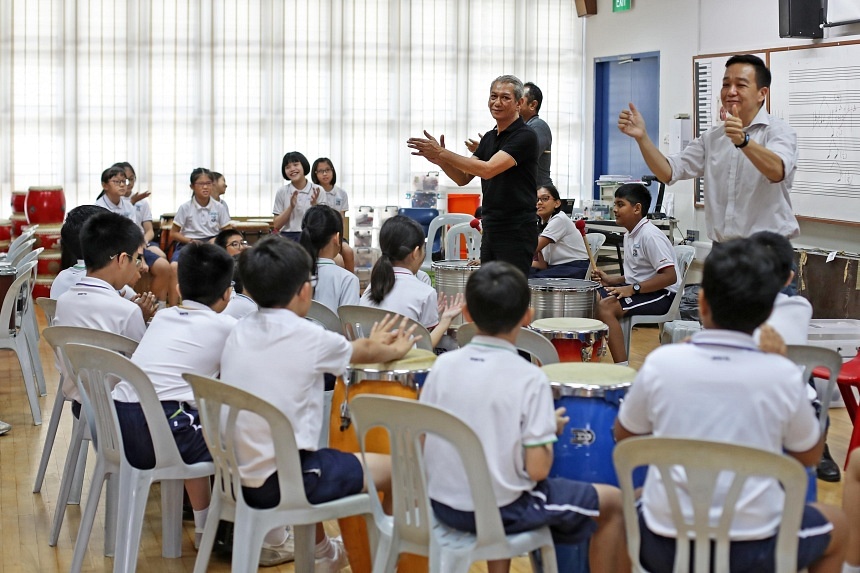SINGAPORE – The new approach to gifted education will not result in changes to typical class sizes of 30 to 40 pupils in primary schools here, said Education Minister Chan Chun Sing on Sept 10.
Schools are able to decide on class sizes for school-based programmes and after-school modules for higher-ability learners, as well as for those who need more learning support, he told Parliament in response to questions from MPs on changes to the 40-year-old Gifted Education Programme (GEP) announced in August.
Class sizes are not necessarily the most important determiner of educational outcomes, he said. Rather, it is the quality of teachers and the resources available to them.
Singapore needs to “transcend” the debate on class sizes, and instead focus on leveraging technology to “arrive at the Holy Grail, where our students can have a pedagogy of one”, Mr Chan said, referring to a state where education is customised en masse to each student’s needs, breaking out of the traditional problem of public education, where only two out of three goals can be achieved: quality at scale, speed of innovation and affordability.
Under changes to the GEP starting with 2024’s batch of Primary 1s, pupils will no longer be selected through a single, two-stage test in Primary 3, and will not transfer out of their original schools to the nine centres if chosen.
Instead, they will be selected for special, school-based programmes for higher-ability pupils which will expand to take in more pupils, and after-school classes will be set up for those who need to be stretched further.
Mr Louis Chua (Sengkang GRC) had asked for the average class size for primary school pupils enrolled in the existing GEP, as well as that of pupils in schools offering the GEP who are not enrolled in the programme.
He asked how these are expected to change as the programme is revamped.
In response, Mr Chan said how big a class is depends on a student’s needs, and schools now have a range of class sizes.
He said: “So today, actually, there is no such thing as the average class size in our school system… In reality, we have a range of class sizes… according to the specific needs of our students needs.”
Students with higher needs tend to be in smaller classes, including pull-out classes of one or two students for those with very high needs, he added.
In response to Mr Chan, Associate Professor Jamus Lim (Sengkang GRC) said that while significant resources have been dedicated to students at both ends of the spectrum of ability, having large class sizes for those in the middle may imply that there is not enough diversity within this group to warrant smaller classes.
He asked if there could be greater tailoring to the needs of middle-ability students through smaller class sizes.
Responding, Mr Chan said tailoring can be achieved through technology, and the question of how large a class should be is also a question of how the Education Ministry (MOE) manages its finite resources – which, in this case, is the limited number of quality teachers.
He added that no matter how many teachers there are, MOE would not apply teaching resources evenly to all classes because the required class size depends on students’ needs.

